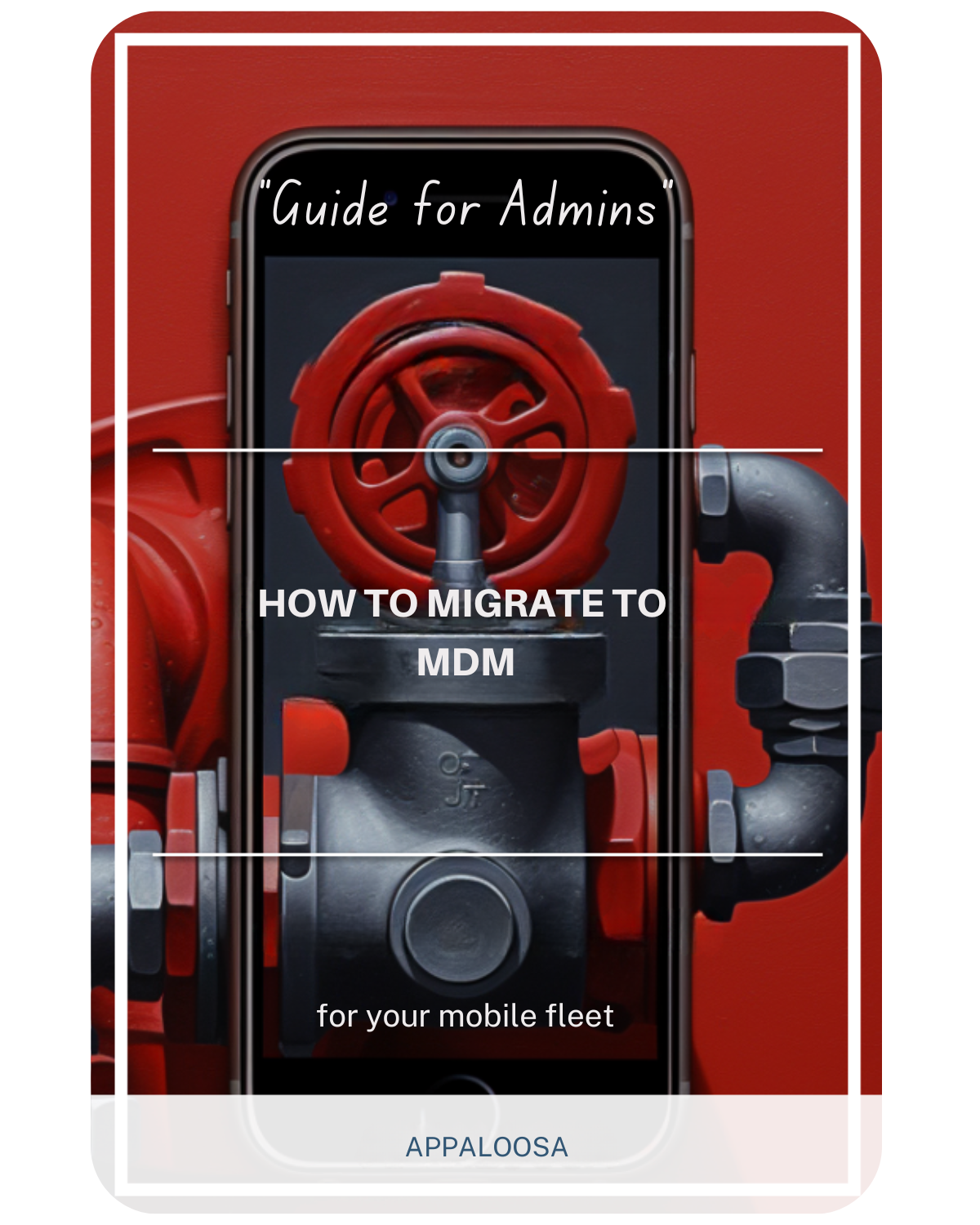Understand everything about CYOD: Chose Your Own Device

In the evolving landscape of workplace technology, organizations are continuously exploring mobile strategies that balance employee satisfaction with data security.
Among these approaches, choose-your-own-device programs have become popular. They provide unique benefits for both employers and employees who use devices for work.
Understanding Device Choice Programs and Their Place in Modern Business
What is Choose Your Own Device?
The CYOD meaning refers to a model where companies let employees choose their mobile devices. These devices come from a list of approved options.
This model is different from the common bring your own device approach. It allows companies to keep ownership while giving employees some choice.
This employee device selection framework usually fits under the company-owned personally enabled (COPE) structure. In this setup, devices bought by the business can be used for work and personal use.
Device choice programs fundamentally change how organizations approach enterprise mobility management.
Curated device programs give employees a choice. They can use company devices or select from approved personal devices.
This is better than only allowing company devices or any personal device. This choice meets different user needs while keeping control over sensitive and company data safe.
The Evolution of Corporate Device Management Strategies
The benefits of BYOD include happier employees and lower hardware costs. However, many organizations find that allowing personal devices can create big problems for data protection.
Managed device choice programs came about to address these concerns. They provide controlled options without completely taking away employee freedom.
The shift toward corporate device selection programs reflects growing awareness about cybersecurity risks and regulatory compliance requirements. The implementation of comprehensive CYOD cyber security measures has become essential for protecting corporate data in today's threat landscape.
Organizations handling business data must ensure robust mobile security solutions without creating friction in employee workflows. These controlled device ecosystems address this challenge by pre-vetting devices for security capabilities and compatibility with corporate systems.
Key Advantages of Employee Device Choice Initiatives
Enhanced Mobile Device Security
One of the primary drivers for adopting choose your own device policies is improved data security. When organizations manage device purchases carefully, they can make sure each device meets basic security standards before use.
This proactive mobile security framework significantly reduces the risk of data breaches compared to unmanaged personal devices.
Enterprise device programs enable IT departments to implement comprehensive security measures from day one. Pre-configured devices in these mobility solutions have several features.
They can include encryption to protect data. They also have remote wipe capabilities to erase data if needed. Additionally, they provide secure containers for company information.
This level of control proves particularly valuable for organizations implementing secure device deployment strategies for sensitive data subject to regulatory compliance requirements.
Balancing Cost Efficiency with Corporate Governance
While device choice initiatives require initial investment in device procurement, they often deliver substantial cost savings through optimized device lifecycle management. These programs prove particularly cost effective when compared to the hidden expenses of supporting unlimited personal device variations.
Organizations benefit from bulk purchasing agreements, standardized support processes, and reduced security incident costs. The controlled mobile environment also minimizes compatibility issues that can drain IT resources.
The financial benefits of strategic device procurement extend beyond direct hardware costs. Managed device programs typically experience lower support ticket volumes because IT teams work with a known set of devices.
This familiarity in corporate IT governance accelerates troubleshooting and reduces time spent on device-specific issues. Additionally, standardized mobile device management tools and processes create operational efficiencies that compound over time.
Improved Employee Experience Through Technology Choice

Flexible device policies strike an optimal balance between corporate control and employee technology preferences.
By providing a list of approved devices, organizations recognize that different roles and work styles need different technology options. This diversity of types of devices ensures that every department can find hardware that meets their specific operational requirements.
Sales teams might prefer tablets for client presentations, while developers need powerful laptops for coding. Personalized device programs accommodate these preferences within a controlled framework.
Employee satisfaction increases when workers can choose devices that match their work style through user-centric device selection.
This choice element distinguishes modern workplace mobility programs from traditional corporate device programs where everyone receives identical hardware regardless of their needs. The personal enablement part of these hybrid device strategies removes the need for employees to carry many devices. This helps improve work-life balance.
Implementing Successful Device Selection Programs: Best Practices
Creating an Effective Approved Device Portfolio
Developing a comprehensive device selection framework requires careful consideration of organizational needs, budget constraints, and user preferences.
The device catalog should have options in different shapes, operating systems, and price ranges. It must also keep enterprise security standards. Organizations typically offer various types of devices including smartphones, tablets, and laptops from major manufacturers through their technology choice programs.
Device evaluation criteria for corporate device portfolios should encompass security capabilities, management compatibility, durability, and lifecycle considerations.
IT teams must check if each device can support needed mobile security controls. They should also see if it can work with current systems.
Finally, devices must receive regular updates during their expected service life. User feedback and preference surveys can inform device procurement strategies to ensure the offered devices meet actual workplace needs.
Establishing Comprehensive Usage Guidelines
Successful managed device initiatives require comprehensive policies addressing both professional and personal device usage. These mobile device policies must clearly define acceptable use parameters, data protection responsibilities, and privacy boundaries. A well-crafted CYOD policy serves as the foundation for program success, ensuring all stakeholders understand their rights and responsibilities.
Employees must understand which personal activities they can perform on company devices.
They should also understand how the corporate mobility framework will protect their privacy.
IT security policies should address software installation rights, app store access, personal data storage, and device monitoring practices.
Clear communication about IT's ability to access device data helps establish trust while ensuring employees understand their responsibilities for protecting business data.
Regular policy reviews ensure device management guidelines remain relevant as technology and workplace practices evolve.
Managing Complete Device Lifecycles
Enterprise device programs must address the complete device lifecycle from procurement through retirement. This includes initial device setup, ongoing maintenance, upgrade cycles, and secure disposal processes.
Establishing clear technology refresh strategies helps organizations budget for device replacements while ensuring employees work with current technology.
Device lifecycle management also encompasses handling employee departures and role changes. Organizations need secure device transition processes for retrieving devices, removing corporate data, and either reassigning or retiring hardware.
Clear procedures for device damage, loss, or theft protect both corporate assets and employee interests through comprehensive device governance. When a device is lost or stolen, immediate remote wipe capabilities become crucial for protecting sensitive company information from unauthorized access.
Comparing Mobile Device Management Approaches
Device Choice Programs vs. BYOD
While both approaches offer device flexibility, controlled selection models provide greater control over data security and support standardization.
BYOD may offer greater cost savings on hardware but often incurs higher support and security costs. In contrast, CYOD programs often prove more cost effective in the long run due to reduced support complexity.
The managed device environment of choice programs simplifies enterprise mobility management and mobile application management deployment.
The decision between curated device programs and BYOD often depends on organizational culture, security requirements, and budget priorities.
Industries that handle sensitive data often prefer to control the devices they use. In contrast, startups may like BYOD because it costs less at first.
Some organizations implement hybrid mobility strategies, offering device choice for certain roles while allowing BYOD for others.
Understanding Alternative Enterprise Mobility Models
Company owned personally enabled (COPE) represents the broader category encompassing various device provisioning strategies.
While employee choice programs specifically emphasize device selection, other COPE variations might assign specific devices without employee input. COBO (Company Owned, Business Only) restricts devices to professional use only, eliminating personal usage entirely.
Each mobility management approach offers distinct advantages for different organizational contexts. COBO provides maximum control for high-security environments, while COPE variations balance security with employee satisfaction.
Understanding these device deployment models helps organizations select the most appropriate strategy for their specific needs.
Overcoming Implementation Challenges
Addressing Employee Privacy in Corporate Device Programs
Even with company ownership, employees may harbor privacy concerns about device monitoring and personal data access. Successful workplace technology initiatives address these concerns through transparent policies and technical controls that separate personal and professional data. Containerization technologies can create distinct environments for work and personal activities within managed mobility frameworks.
Organizations must carefully balance monitoring capabilities with privacy respect in their device management strategies. While data protection requires certain visibility into device usage, excessive monitoring can damage employee trust and satisfaction.
Clear communication about corporate device monitoring policies helps establish appropriate boundaries.
Optimizing Program Investment and ROI
While strategic device programs can deliver long-term cost savings, initial implementation requires significant investment in devices, management platforms, and support infrastructure. Organizations must carefully plan technology investment strategies to accommodate device procurement, software licensing, and ongoing support costs. Phased rollouts can help manage initial expenses while proving program value.
Cost optimization strategies for enterprise device initiatives include negotiating volume discounts, implementing device leasing programs, and establishing clear upgrade cycles.
Some organizations offset costs by implementing device stipends or cost-sharing arrangements where employees contribute to premium device options.
Regular program performance assessments ensure costs remain aligned with delivered value.
Future Trends in Enterprise Device Management
Emerging Technologies and Workplace Mobility
As workplace technology evolves, corporate device strategies must adapt to accommodate new device categories and usage patterns. The rise of wearable devices, augmented reality hardware, and IoT endpoints creates new considerations for technology selection programs.
Organizations must evaluate how these emerging technologies fit within their mobility governance frameworks.
5G connectivity and edge computing capabilities will influence future device selection criteria. Devices leveraging these technologies may offer new possibilities for remote work enablement and field operations.
Forward-thinking device programs that anticipate technological shifts can provide competitive advantages through early adoption of productivity-enhancing tools.
Evolving Security Requirements
The cybersecurity threat landscape continues to evolve, requiring managed device environments to adapt their data security approaches. Zero-trust security models, behavioral analytics, and AI-powered threat detection will increasingly influence how organizations protect devices for work.
Modern mobility programs must remain agile to incorporate new security technologies and methodologies. Advanced CYOD cyber security implementations now include AI-driven threat detection and automated response systems.
Regulatory requirements around data protection will likely become more stringent, particularly for organizations handling sensitive data. Structured device programs offer advantages in demonstrating compliance through standardized security controls and audit trails.
Organizations should design their device governance frameworks with flexibility to accommodate evolving regulatory requirements.
Maximizing Success with Choose Your Own Device Strategies
Employee device choice programs represent mature approaches to workplace mobility that balance user preferences with organizational control.
By offering curated selections from a list of approved devices, organizations can enhance data security, achieve cost savings, and improve employee satisfaction simultaneously.
These models' alignment with company owned personally enabled principles provides sustainable frameworks for modern workplace technology management.
Success with managed device choice initiatives requires thoughtful planning, clear policies, and ongoing program management. Organizations must carefully select device options, establish comprehensive usage guidelines, and maintain flexibility to evolve with changing technology landscapes.
When implemented effectively, these enterprise mobility solutions deliver benefits that extend beyond simple device provisioning to create competitive advantages through enhanced productivity and security.
As workplace technology continues to evolve, strategic device management programs offer proven frameworks for managing the intersection of corporate and personal technology needs. Organizations that excel in choosing devices can attract top talent. They also protect important business data and keep operations running smoothly in a mobile world.
The future belongs to companies that can balance employee empowerment with strong data protection. This can be done through smart device strategies.

